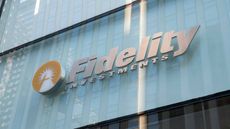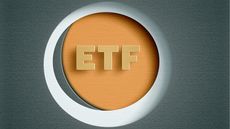5 Merger Funds With Steady Returns
If you want to dabble in merger arbitrage, leave it to the experts who run these funds.
Xerox announced in September that it plans to buy Affiliated Computer Services, promising to pay $18.60 in cash plus 4.935 of its own shares for each share of the Dallas-based technology consultant. At Xerox’s October 15 closing price, the offer is worth about $56.55 per share. Yet ACS shares closed that day at less than $52.68. Is this a nearly $4-a-share free lunch just waiting to be served?
Sure looks that way on the surface. Say you buy at current prices and the deal closes at the end of January 2010 (Xerox proposes an early 2010 completion). You will have made 7.3% on your money in less than four months. On an annualized basis, that’s a 25% return. But while nothing is stopping amateur investors from getting in on a deal like this (see Call Me Manny the Arb), there are a lot of potential pitfalls. That’s why it’s a good idea to leave merger investing in the hands of specialists known as risk arbitrageurs. They sort through hundreds of deals like this one, investing in some and avoiding others.
A handful of mutual funds specializing in this arcane area of finance are known for providing steady, low-volatility returns that hold up well even in a bear market. Many advisers recommend allocating 10% to 15% of a portfolio to one of these funds because of their diversification benefits. It’s best to own the fund in a tax-deferred plan because it’s likely to do a lot of buying and selling, which can generate short-term gains that are taxed at high marginal rates.

Sign up for Kiplinger’s Free E-Newsletters
Profit and prosper with the best of expert advice on investing, taxes, retirement, personal finance and more - straight to your e-mail.
Profit and prosper with the best of expert advice - straight to your e-mail.
U.S. merger activity is still in something of a slump following last year’s financial meltdown. Year-to-date through October 15, merger volume is down 42% from the same period a year ago, according to Dealogic, a research firm. But a slew of transactions since late August may be signaling that corporate executives are ready to dust off their deal-making skills. Given the uncertain outlook for the economy, buying another company may be their quickest route to increased profits.
Meanwhile, the gap between a target company’s share price and the announced deal price has been growing wider and staying that way longer. One reason is that many arbitrageurs didn’t survive last year’s disastrous market, leaving fewer players to bid up prices. Another is that big institutional investors are now inclined to quickly dump their stakes in a target company once a deal is announced. A few years ago, when credit was easy, they would hang on to their shares, hoping for a higher bid to emerge. But in recent years, many were burned by merger deals that fell through.
What can scuttle an announced deal? Plenty of things: Lenders can refuse to finance it, regulators can intervene, influential shareholders can balk at the terms, or the target might fail to perform up to expectations. In the Xerox-ACS deal, there’s also the possibility that Xerox shares will fall, reducing the value of the eventual payoff. You can offset this danger by selling short Xerox shares -- that is, selling borrowed shares in hopes that you’ll be able to buy them back later at a lower price. But short selling is tricky and full of risks.
We found five no-load funds that specialize in merger arbitrage and know how to navigate the terrain. There are significant differences in their approaches, however. The funds are profiled below. Our favorites are the first two -- Merger Fund and Arbitrage Fund -- because each offers experienced managers and a relatively pure focus on merger arbitrage.
As befits a fund with its name, Merger Fund (symbol MERFX) is the granddaddy of merger mutual funds. Launched in 1989, it is still led by its original manager, Frederick Green. With $1.8 billion in assets, though, it must focus on larger deals, typically involving target companies with a market value of at least $300 million.
And when deal making is at a lull, the fund might hold a big cash stake or engage in related types of arbitrage investing. One example: As Citigroup converts preferred shares into common stock to boost its capital levels, Merger Fund is buying the Citi preferred and shorting the common to profit from price discrepancies. The fund will also invest in hostile deals, which are riskier than friendly ones, and in companies that are looking for a buyer but haven’t yet found one.
Over the long term, Green aims for an 8% to 12% annual return, a target he hasn’t hit recently. Over the past decade through September 30, the fund produced a 4.9% annualized return, well ahead of the performance of Standard & Poor’s 500-stock index, which was flat over the period. This year through October 15, the fund gained 7.8%, trailing the S&P 500 by 16 percentage points.
Merger lost 2.3% in 2008, a terrific result considering that the S&P plunged 37%. The fund has lost money in only one other calendar year (in 2002, when it surrendered 5.7%). Merger���s annual expense ratio is 1.47%.
Launched in 2000, Arbitrage Fund (ARBFX) is still small enough ($468 million in assets) to get into deals that Merger Fund won’t touch. It will buy shares of target companies with market values as low as $5 million. That gives manager John Orrico a bigger menu to choose from, although he picks his spots carefully. He avoids most hostile deals and leveraged buyouts (deals financed through heavy borrowing). He also calls his fund the only pure play in the field because he shuns other types of arbitrage strategies.
The fund returned an annualized 5.3% over the past five years through October 15 and gained 8.8% year-to-date. It lost 0.6% last year. Arbitrage’s only other down year came in 2005, when it dipped 0.2%. Fees total 1.69% annually.
Gabelli ABC (GABCX) is a freewheeling fund that engages in merger arbitrage. But it also buys value stocks and convertible securities and sometimes holds big cash stakes. Value maven Mario Gabelli has managed the fund since its 1993 inception.
The fund has a good track record -- an annualized return of 5.4% over the past decade through September 30, with low volatility. At 0.63% annually, expenses are less than half those of the Merger and Arbitrage funds. But you’ll need at least $10,000 to become a shareholder.
Pennsylvania Avenue Event-Driven Fund (PAEDX) uses a blend of strategies, all triggered by corporate “events,” such as mergers, reorganizations and restructurings. Each of these situations can cause uncertainty about the value of a company’s stock and bonds, opening the door to skilled players. Thomas Kirchner, who launched Pennsylvania six years ago, engages in traditional merger-arbitrage strategies but also undertakes higher-risk strategies, including purchasing undervalued bonds issued by companies in or near bankruptcy, and investing in companies involved in proxy fights.
Yet it was bread-and-butter merger plays that burned the fund in 2008, when it took stakes in failed small and midsize mergers involving mortgage servicer PHH, footwear maker Genesco and video distributor Image Entertainment, among others. A temporary ban on short selling also hampered some of the fund's other arbitrage strategies. It lost 26% in 2008; by year-end less than half of its assets were in traditional merger arbitrage, and nearly a quarter of its holdings were in cash.
Over the past five years, Pennsylvania returned an annualized 6.3% but with twice the volatility of other merger funds. It has rebounded strongly this year, with a 29.5% gain. The fund’s expense ratio is 1.5%.
AQR Diversified Arbitrage (ADANX), launched in January, is the new kid on the block. Managed by a team of four, the fund employs a mix of merger investments and other arbitrage strategies intended to profit from temporary price discrepancies among different types of securities issued by a company or by a parent company and subsidiary. The fund returned 5.6% during its first six months, but it needs more time to season. The fund charges 1.5% in annual fees.
Get Kiplinger Today newsletter — free
Profit and prosper with the best of Kiplinger's advice on investing, taxes, retirement, personal finance and much more. Delivered daily. Enter your email in the box and click Sign Me Up.
-
 Embracing Generative AI for Financial Success
Embracing Generative AI for Financial SuccessGenerative AI has the potential to reshape how we approach learning about and managing our personal finances.
By Rod Griffin Published
-
 Gen X Retirement Is in Trouble: Here's What You Can Do
Gen X Retirement Is in Trouble: Here's What You Can DoEven as they approach retirement age, half of Gen Xers have not done any retirement planning.
By Adam Shell Published
-
 The 5 Best Actively Managed Fidelity Funds to Buy Now
The 5 Best Actively Managed Fidelity Funds to Buy Nowmutual funds In a stock picker's market, it's sometimes best to leave the driving to the pros. These Fidelity funds provide investors solid active management at low costs.
By Kent Thune Last updated
-
 The 12 Best Bear Market ETFs to Buy Now
The 12 Best Bear Market ETFs to Buy NowETFs Investors who are fearful about the more uncertainty in the new year can find plenty of protection among these bear market ETFs.
By Kyle Woodley Published
-
 Don't Give Up on the Eurozone
Don't Give Up on the Eurozonemutual funds As Europe’s economy (and stock markets) wobble, Janus Henderson European Focus Fund (HFETX) keeps its footing with a focus on large Europe-based multinationals.
By Rivan V. Stinson Published
-
 Best Bond Funds to Buy
Best Bond Funds to BuyInvesting for Income The best bond funds provide investors with income and stability – and are worthy additions to any well-balanced portfolio.
By Jeff Reeves Last updated
-
 Vanguard Global ESG Select Stock Profits from ESG Leaders
Vanguard Global ESG Select Stock Profits from ESG Leadersmutual funds Vanguard Global ESG Select Stock (VEIGX) favors firms with high standards for their businesses.
By Rivan V. Stinson Published
-
 Kip ETF 20: What's In, What's Out and Why
Kip ETF 20: What's In, What's Out and WhyKip ETF 20 The broad market has taken a major hit so far in 2022, sparking some tactical changes to Kiplinger's lineup of the best low-cost ETFs.
By Nellie S. Huang Published
-
 ETFs Are Now Mainstream. Here's Why They're So Appealing.
ETFs Are Now Mainstream. Here's Why They're So Appealing.Investing for Income ETFs offer investors broad diversification to their portfolios and at low costs to boot.
By Nellie S. Huang Published
-
 Do You Have Gun Stocks in Your Funds?
Do You Have Gun Stocks in Your Funds?ESG Investors looking to make changes amid gun violence can easily divest from gun stocks ... though it's trickier if they own them through funds.
By Ellen Kennedy Published